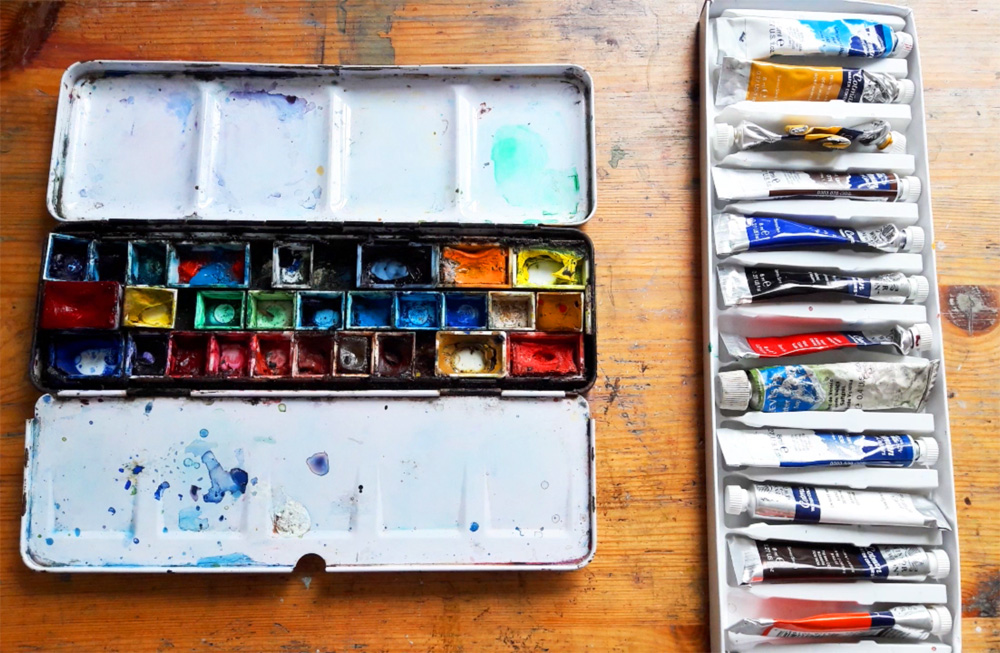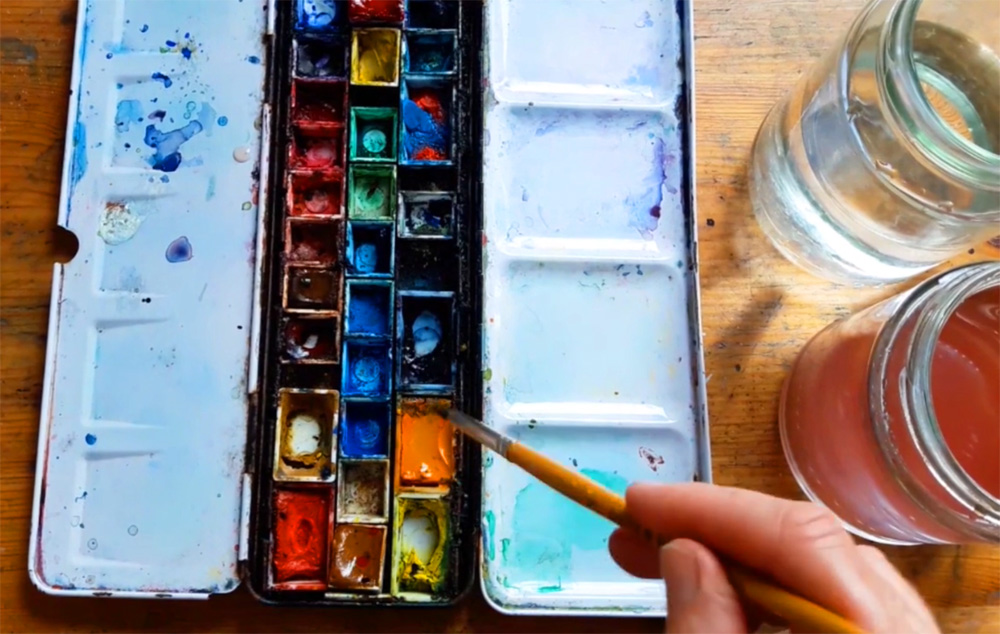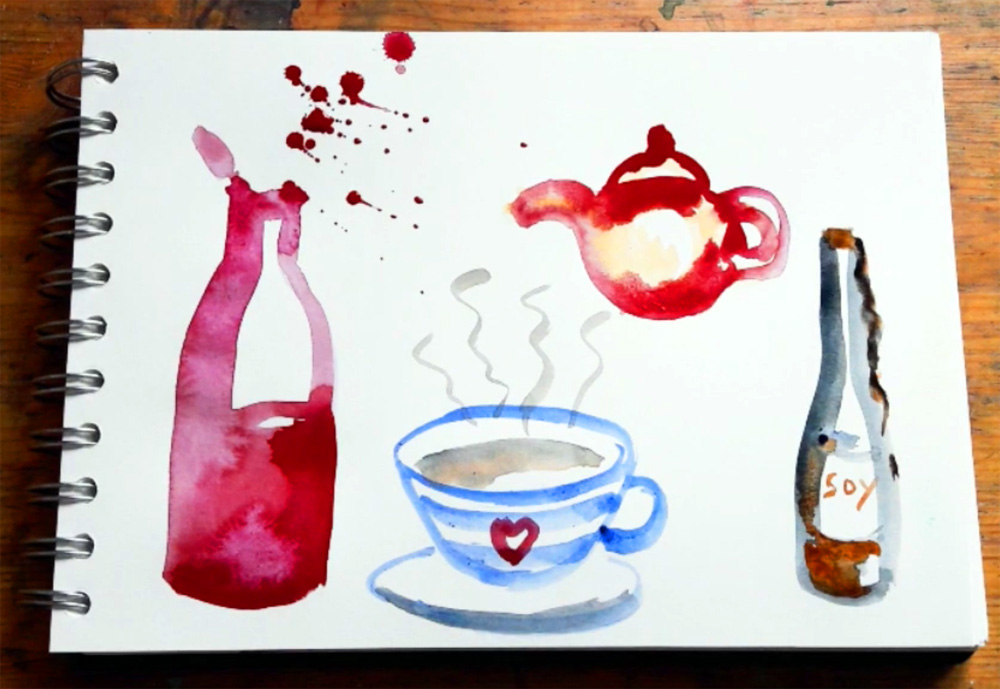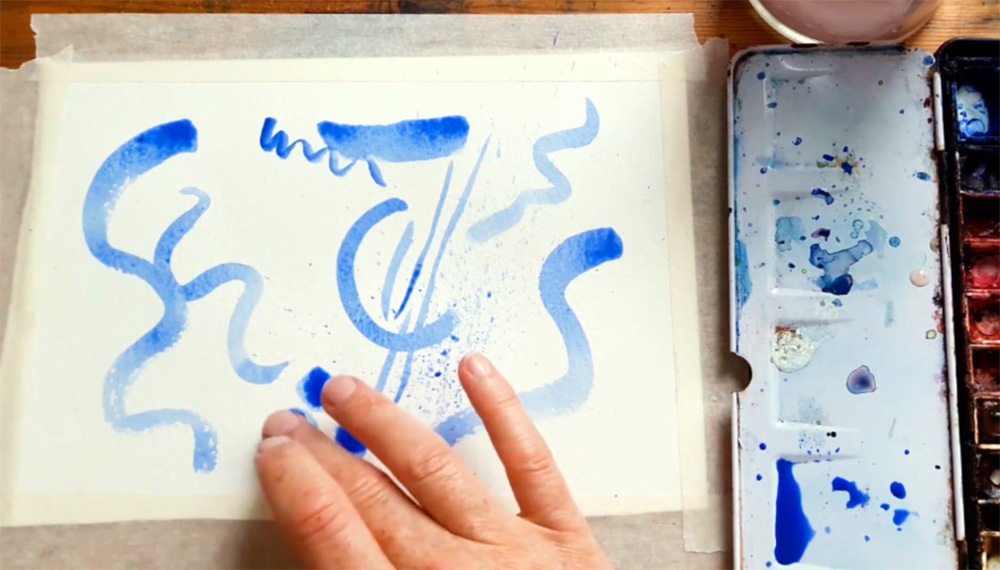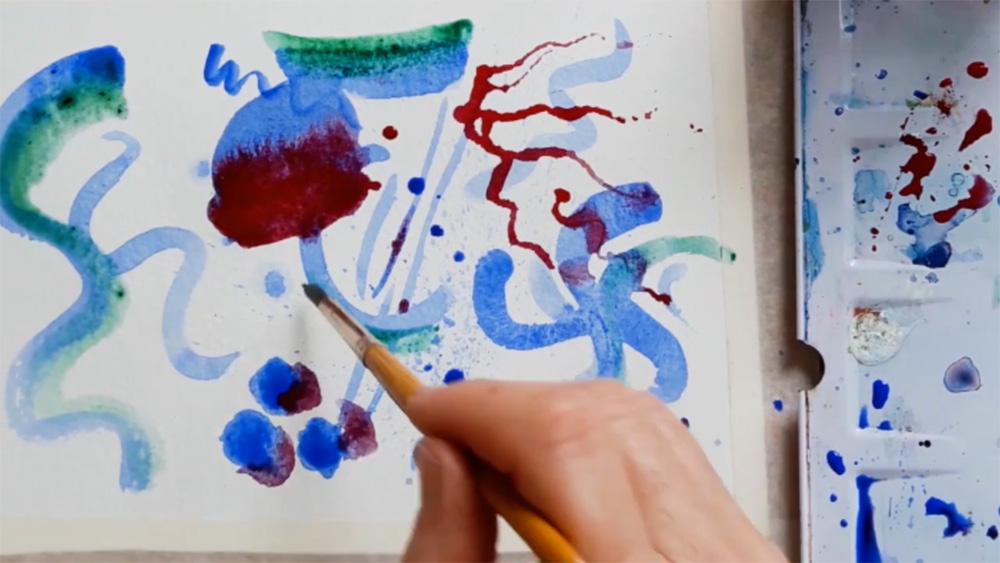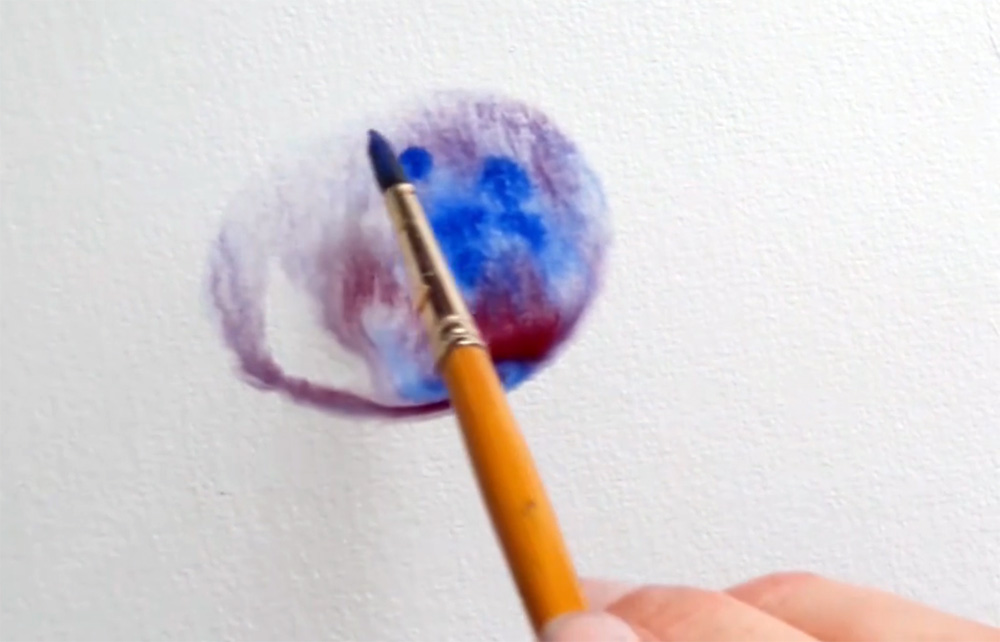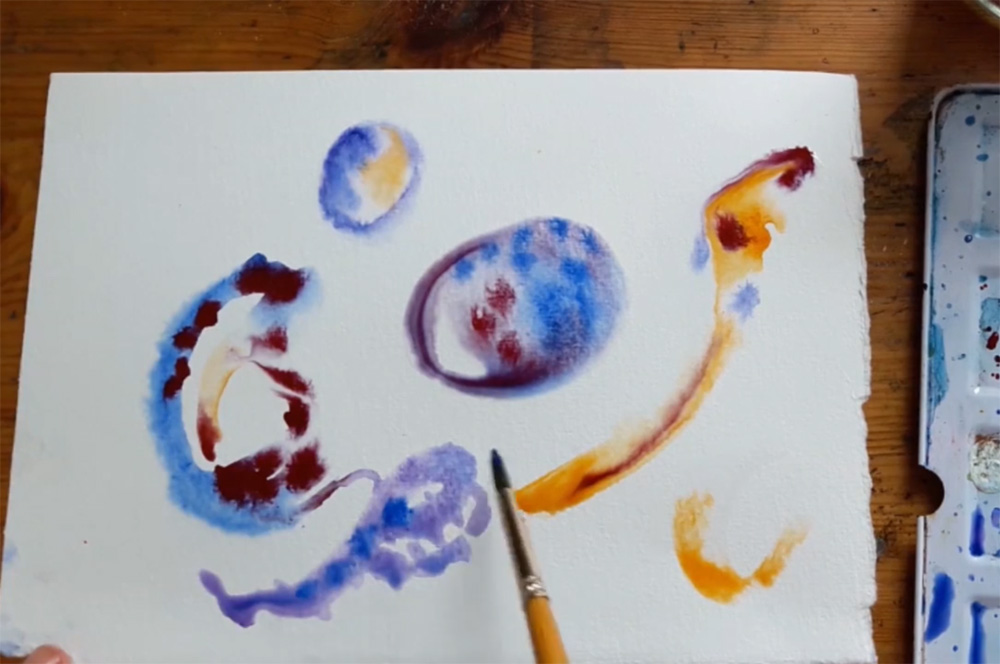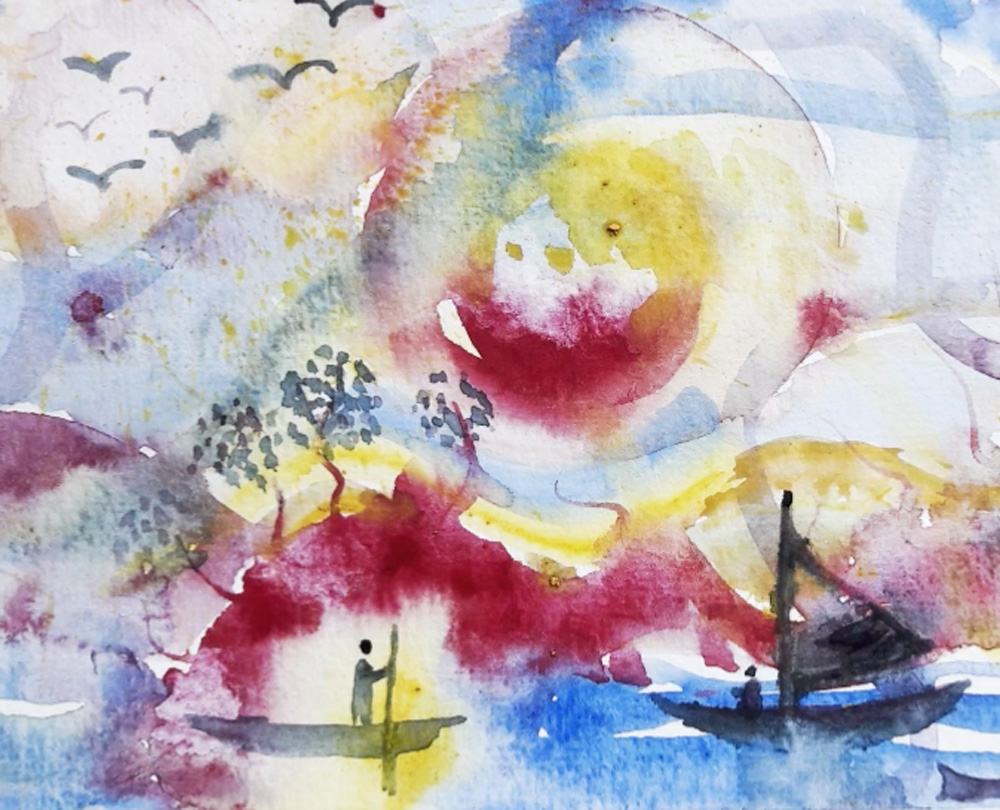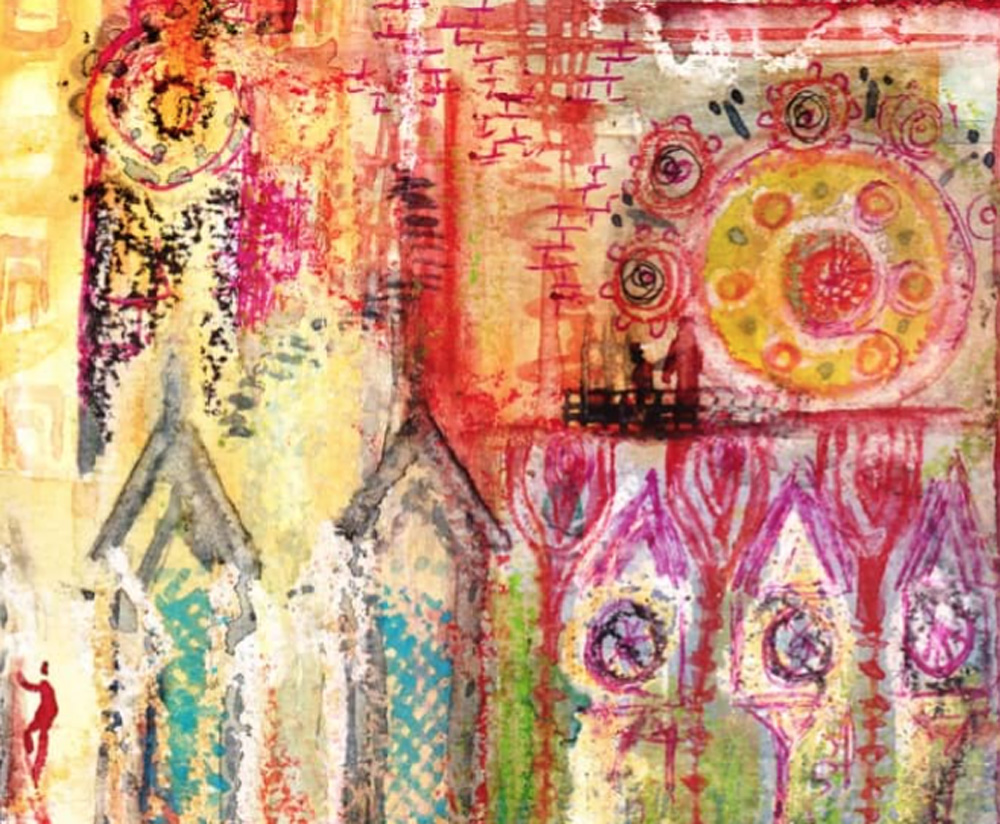DrawAble: Exploring Through Watercolour by Emma Burleigh Part One
By Emma Burleigh
Emma is an artist, writer and teacher with a passion for watercolour and the way it links to mental and spiritual wellbeing. As part of the DrawAble series of resources for learning at home or school, Emma demonstrates a range of watercolour techniques that encourage experimental painting.

Notes for Teachers
What is the aim of this exercise?
This project teaches children and teenagers how to use watercolour, and create emotive watercolour paintings. The resource encourages creative play and experimentation, and encourages children and teenagers to try out new watercolour techniques.
What age can this exercise be used with?
This resource is suitable for participants aged 6+ and can be easily adapted for older children, teenagers or even adults.
How long does this exercise take?
This exercise will take between 30 minutes and 2 hours. Children may become engrossed in the activity and continue experimenting to create more complex paintings.
How do I measure success?
Success will be measured by the children’s willingness to experiment with watercolour, their engagement and interest in the activity.
More able or engaged children may demonstrate more confident mark-making and brush control; they may want to use a wider variety of colours and/or tools to create their paintings.
Encourage children to experiment with their creations – they may be inspired to use fingers or a feather instead of a paintbrush, or use an alternative material. Reassure your learners that the end result does not have to look “pretty” or finished. This activity emphasises the process rather than the outcome.
What can we try after this exercise?
Move on to Part Two of this project
Exploring Watercolour at the Fitzwilliam Museum: an introduction to watercolour and exploring watercolour in the studio
Painting the Storm at Bourne Primary Academy is a weather-inspired exploration of watercolour and graphite
Try other DrawAble exercises and projects.
Which artists might we look at?
You may want to look at classic and contemporary painters:
J.M.W.Turner – sketchbooks, drawings and watercolours
Talking Points: Paul Cézanne
The dream like pictures of Marc Chagall
Emma Larsson takes inspiration from nature for her organic forms
You may also want to look at Emma’s other art and projects.
Introduction
Hello. I’m Emma, and I’m about to show you my favourite art material in the whole world: watercolour. I love watercolour for so many reasons. It’s beautiful, glowing, and unpredictable. It surprises you all the time. It’s also easy to use at home or at school. You don’t really need any special equipment and it’s quite easy to clean up if you have an accident.
Materials you’ll need:
Before we get started, you’ll need to get some things. You need to get two pots of water – you could use jam jars or old yoghurt pots. You will also need a paintbrush and some paper. Use the thickest paper you’ve got. Get a bit of kitchen roll or toilet paper, too. And you’re going to need some watercolours, of course.
Watercolours come in two forms: pans or tubes. Either is fine, and I’ll explain how to use them both.
Mixing watercolour paints
First of all, we need to mix up our paints. To mix watercolour pans (that’s little hard round or square-shaped paints), stick your brush in some water, and then put it on the surface of that hard pan and scrub vigorously. Use lots of water (more than you think) until you get a nice, rich, fluid colour on the top of that pan.
If you’re using tubes, squeeze a tiny bit out onto a palette, (or your plate, or something plastic from the recycling if you haven’t got a palette). You only need a tiny bit – about the same amount as a garden pea. Now, get plenty of water and mix it up thoroughly. It’s very important that there are no sticky or lumpy bits left. All of that paint should be dissolved until it’s completely watery.
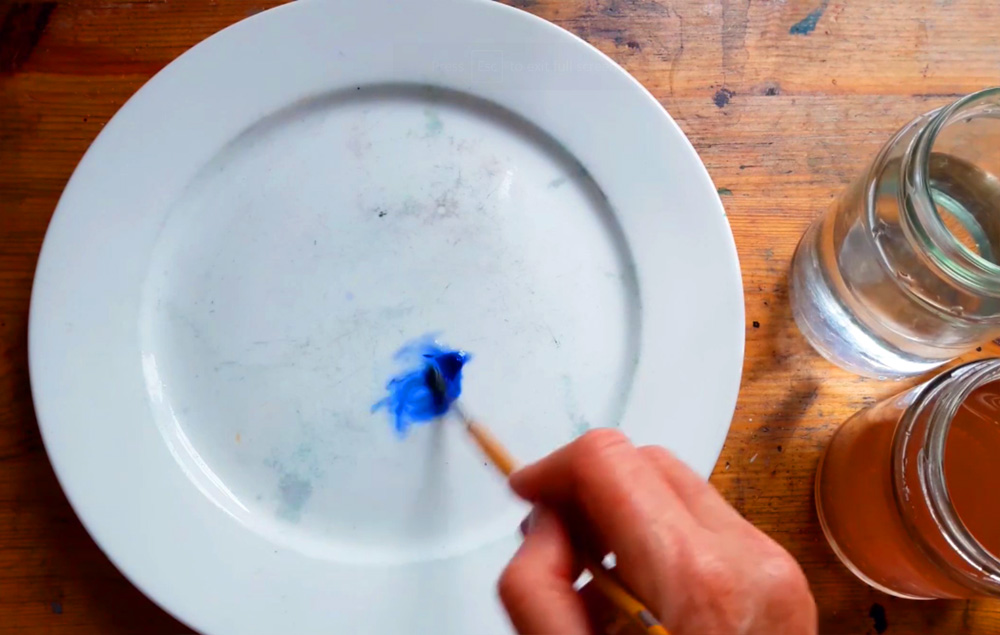
If you don’t have any watercolours at home, don’t worry – any other kinds of paint will do. If you don’t have any paint, there are still some things you might find at home that will work. For example, you could use coffee, or tea, or food colouring, maybe even soy sauce or another kind of sauce. Something watery rather than creamy or greasy would be the best. If you do make a coffee or a tea to paint with, make sure it’s very strong (and don’t put any milk in!)
Making marks with watercolour
Now we’re going to explore what you can do with watercolour. Let’s begin by making some lines, squiggles, and shapes on the page. What can you do with your brush? Can you stroke, wiggle, splatter? Can you use the side of your brush? Could you paint just using the tip of your brush?
Some artists don’t use brushes at all. The famous painter, William Turner, was known to use his fingers. Could you try painting with your fingers, or the wrong end of the pencil, or a feather, or a stick? Even if you don’t have a paintbrush, there’s no excuse not to paint.
What happens if you let one colour touch another on the page? That can look very interesting.
Learning the “wet in wet” technique
Now we’re going to try one of my favourite techniques. It’s called the “wet in wet” technique. Here’s how you do it:
First, dip your brush in your water pot and paint plain water onto the page. Make a circle or a wiggly shape.
You could introduce another colour. Maybe you could pick up your paper and move it around a bit. But don’t brush it – let the paint do its own thing. That’s what I love about this technique – less is more. You could try using different shapes, different colours, several colours, and see what happens.
I’m going to leave it to you now. Carry on finding out what you can do with the watercolour. How many different ways can you use your brush? What’s it like when you just let the watercolour spread itself around on the paper? Discover what you like doing and take some time to get to know how the watercolour works. Enjoy yourself. Don’t worry about trying to make a pretty picture or to make it look like anything in particular – what we’re doing here is experimenting, just to find out what happens!


